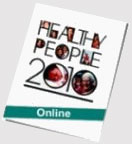 Example:
Monitoring the Healthy People 2010 Objectives Example:
Monitoring the Healthy People 2010 Objectives
An important use of the PedNSS data is monitoring the
Healthy
People 2010 objectives. These objectives are designed
to serve as a goal for monitoring progress towards
improving the health status of the nation. Examples
of those that are relevant to the health of infants
and children that can be monitored by PedNSS include
the following 2010 objectives:*
- Reduce very low birthweight to 0.9 percent. (16–10a)
- Reduce low birthweight to 5 percent. (16–10b)
- Increase the proportion of mothers who breastfeed in the early post partum
period to 75 percent. (16–19a)
- Increase the proportion of mothers who breastfeed at 6 months to 50
percent. (16–19b)
- Increase the proportion of mothers who breastfeed at 1 year to 25 percent.
(16–19c)
- Reduce growth retardation among low-income children under 5 years of age
to 5 percent. (19–4)
* The objective number
follows the objective. |

